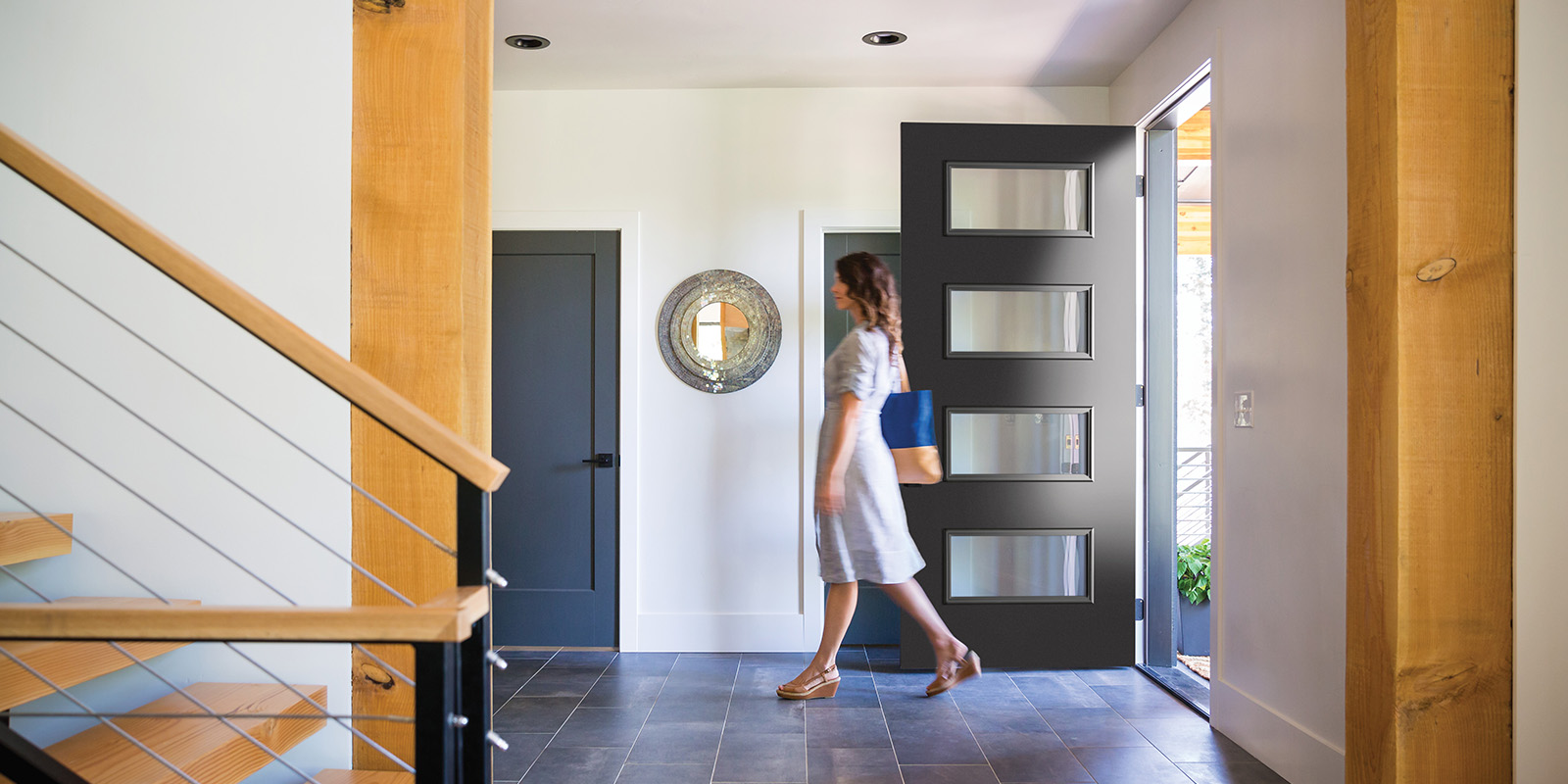

Exterior Door Buying Guide
Exterior entry doors often give visitors the first impression of the house. While doors should reflect a home’s decor and personality, they also need to be secure and strong in order to keep intruders and bad weather out.
The main difference between interior doors and exterior doors is the construction of the door slabs and the frames. Interior doors are typically 1-3/8″ thick and their purpose is to divide interior rooms. Exterior doors are typically 1-3/4″ thick, are constructed to withstand the outdoor elements and provide security and insulation between the inside and outside temperature differences. Exterior door frames include weather strip and a sill to make them energy efficient.
Exterior doors are made from strong materials—i.e., steel, fiberglass, Oak-and-Steel® and wood—that are engineered to withstand harsh weather elements, including snow, rain, cold and heat. Today doors are harder to kick in, providing protection from intruders.
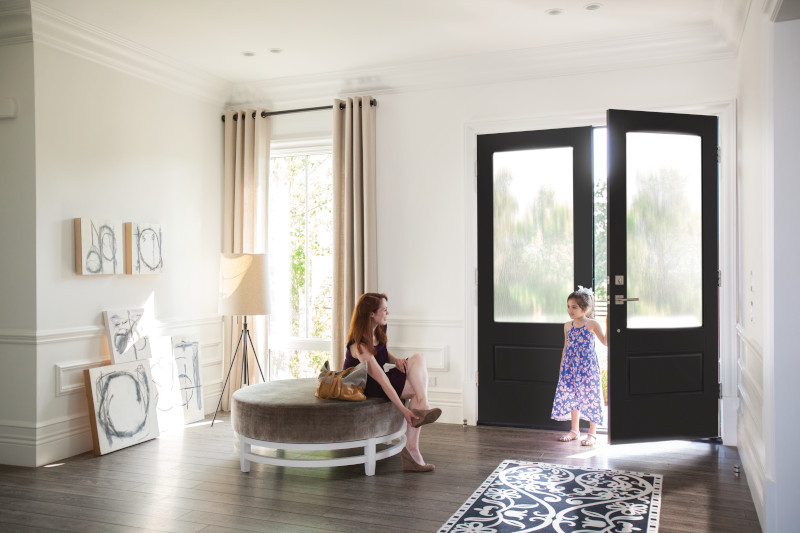
Doors: Masonite VistaGrande Flush-Glazed
Steel Exterior Doors
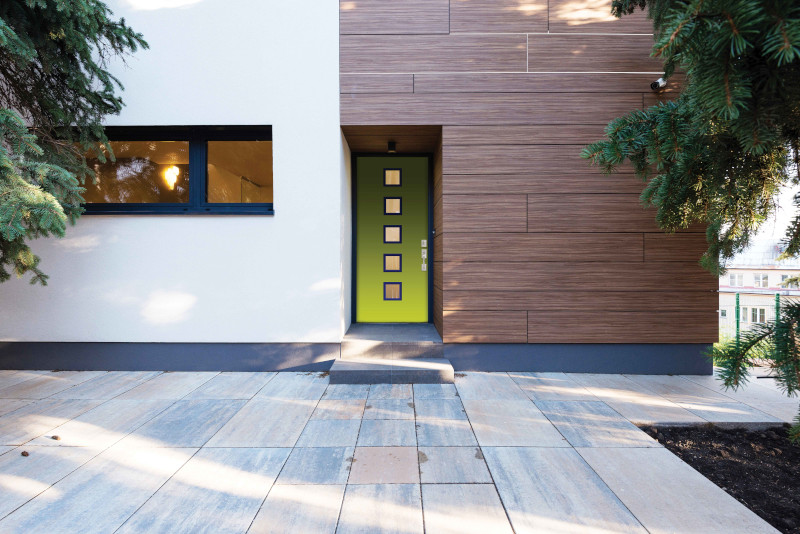
Doors: Masonite HD 5 Center Square Lites Modern Doors
Steel doors are the most energy-efficient choice for an exterior door due to their insulation value. Steel doors offer strength and durability and require little maintenance. In addition, steel doors are extremely resistant to shrinking, swelling, and warping, ensuring that they will last for years to come. Also, their tough steel construction will enable them to withstand the elements of any climate. Steel doors with pre-drilled doorknob and lockset holes are available, making installation easier. Steel doors are available prefinished in solid or faux wood colors or primed and ready to paint.
Benefits:
• Durable and easy to maintain
• Energy-efficient foam core insulation
• Stronger than fiberglass or wood doors
• Resists shrinking, swelling and warping
• Available prefinished in solid colors or faux wood choices or primed and ready to paint
Fiberglass Exterior Doors
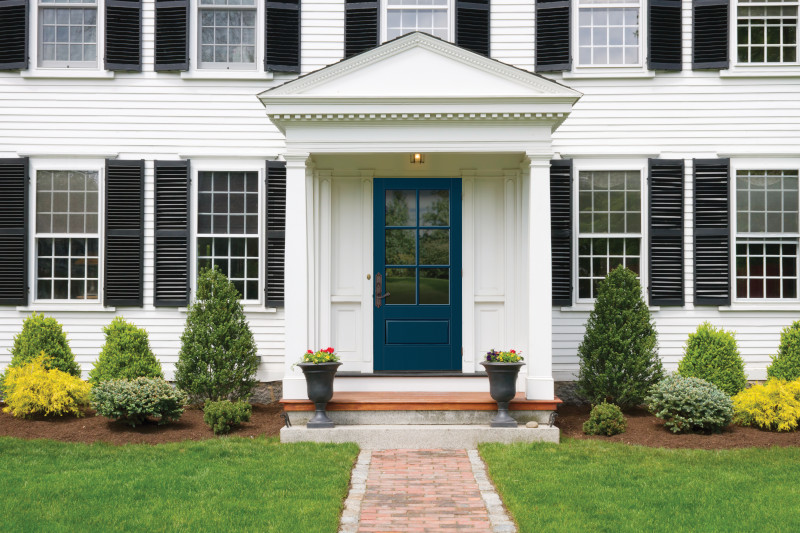
Doors: Masonite 6 Lite (3/4) Over Panel
Fiberglass doors are a popular option for exterior doors. They offer strength, durability and easy maintenance, and they will not crack, rot, rust or warp. One of the main features of fiberglass doors is the energy efficiency provided by the polyurethane foam core. The core is chlorofluorocarbon (CFC) and hydrochlorofluorocarbon (HCFC) free, which provides the highest insulating value AND is better for the ozone! Fiberglass doors are available in a variety of textures and finishes for a truly customized look and can be finished to complement any color or decor.
Benefits:
• Durable and easy to maintain
• Energy-efficient foam core insulation
• Choice of wood grain or smooth texture
• Can be stained or painted to match existing decor
Wood Exterior Doors
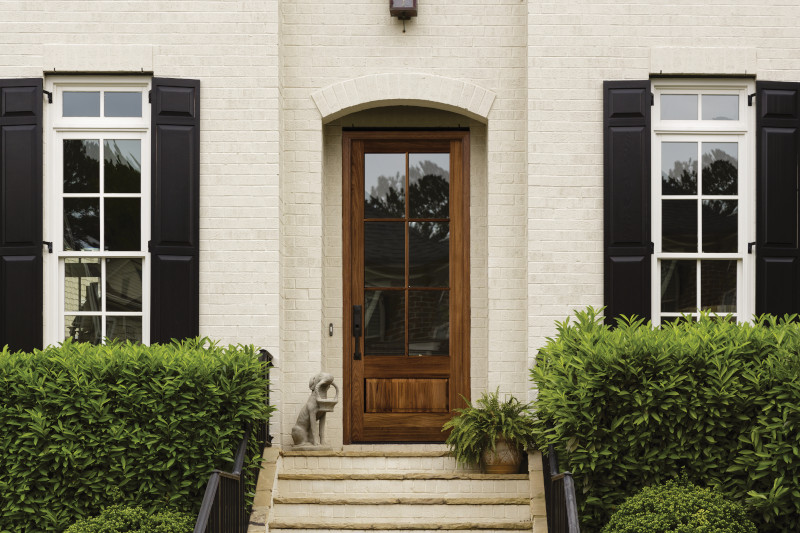
Doors: Masonite 6 Lite (3/4) Over Panel (506)
Wood exterior doors evoke a sense of old-world character, bringing charm and elegance to any home entry. Because of their natural appearance and inviting style, wood doors are a classic choice for historical or Victorian-style homes. Most wood doors are constructed from premium-grade hardwoods with a frame and panel construction to counteract possible effects of a change in climate. The substantial weight provided by a wooden door adds a sense of security and sturdiness to any home.
Benefits:
• Natural appearance
• Classic choice for older, historic homes
• Best when used in sheltered entryways
• Substantial weight adds security and sturdiness
• Constructed with a frame and panel design to counteract effects of climate
Transoms, Sidelites and Glass Panels
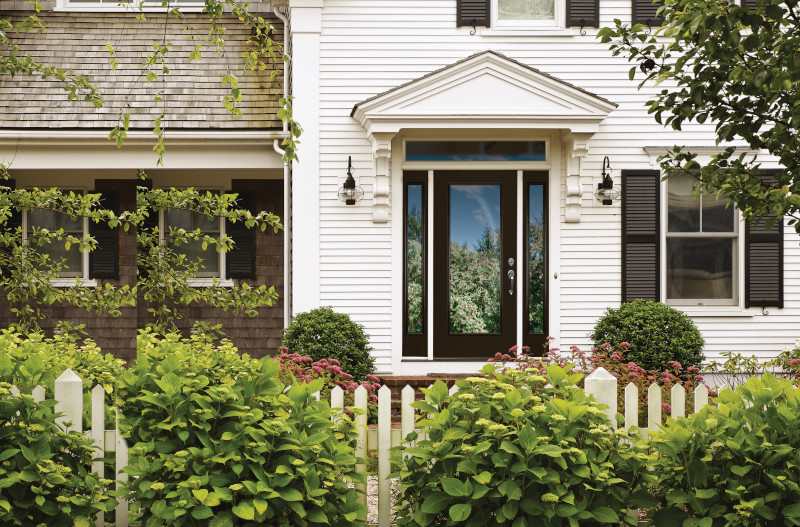
Doors: Belleville Exterior Essential Door with Clear Glass
Transoms, sidelites, and glass panels work to enhance and accent exterior doors while letting in light. Transoms are decorative glass panels that are installed above an exterior door. They are often available in arch, ellipse, and box shapes with a variety of glass designs. Sidelights are long rectangular glass panels that feature beautiful glass designs. They are installed on either or both sides of an exterior door. Another option to add extra light and beautiful decorative glass to an exterior door is to select a door with a glass panel. There are numerous styles and shapes of glass panels to choose from.
Anatomy of a Door Frame
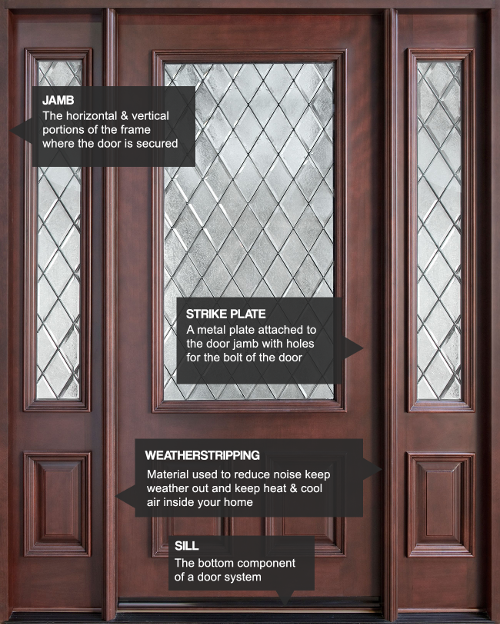
How to Measure
There is no guessing when it comes to installing a door. Be sure to measure correctly the first time for easy installation.
Good to Know
For a more accurate measurement, measure the rough opening. The rough opening is the measurement of the door opening without the trim. Remove all trim before measuring for the most accurate measurement.
Slab Door
1. Take three vertical measurements. The smallest measurement is height.
2. Take three horizontal measurements. The smallest measurement is the width.
Replacing a Door
1. Remove any handles or deadbolts.
2. Repeat steps 1-2 in Slab Door.
3. Measure the door thickness. It should be about 1-3/4″ thick.
4. Measure the placement of the hinges from the top of the door.
5. Measure the width and height of the door hinges.
6. Measure from the top of the door to the center of the door han dle hole.
7. Measure from the edge of the door to the center of the door handle hole.
Pre-Hung Door
1. Take three vertical measurements of the rough opening. The smallest measurement is height.
2. Take three horizontal measurements of the rough opening. The smallest measurement is the width.
3. Measure the thickness of the door jamb.
Single Door Handing Guide
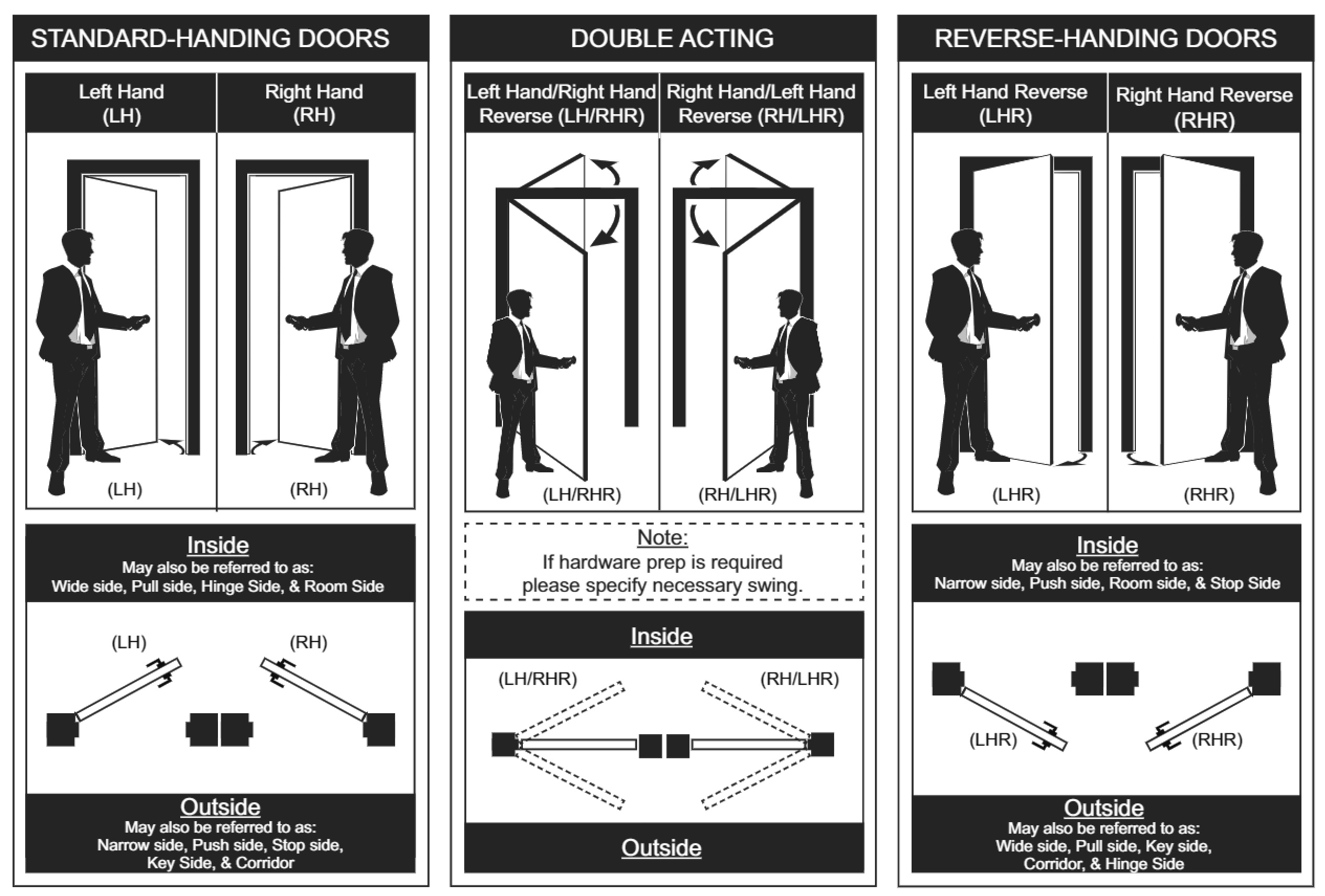
Door swings are determined by which side the lock is on when you pull the door toward you.
Inswing: To open your door from the outside, you must push the door in.
Outswing: To open your door from the outside, you must pull the door towards you.